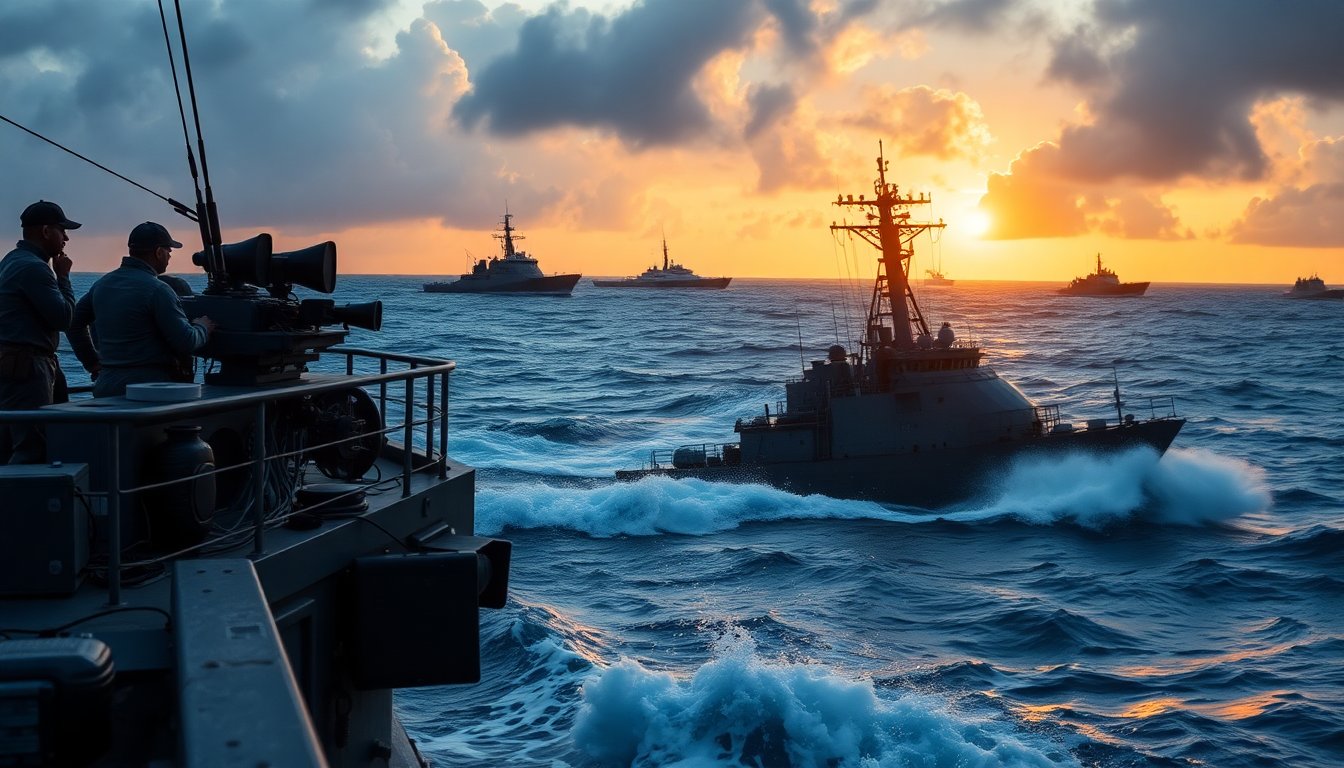Table of Contents
In a decisive move to combat the growing threat of drug trafficking, the United States has expanded its military operations in the Pacific Ocean. This initiative aims to intercept vessels suspected of transporting large quantities of cocaine, primarily along trade routes known for drug distribution.
The latest attacks resulted in the tragic loss of five lives, underscoring the serious implications of this ongoing battle against drug-related crime.
Ongoing military operations
On Tuesday evening, U.S. officials confirmed yet another strike against a boat identified as a drug transport vessel off the coast of South America.
This operation marks the eighth such attack since September 2, showcasing a determined effort by the U.S. military to disrupt illicit drug trafficking in maritime regions. Previous strikes primarily targeted vessels in the Caribbean, but the focus has shifted towards the Pacific, a significant transit area for cocaine shipments.
Heightened enforcement efforts
The recent escalation of military actions is part of a broader strategy to enhance enforcement against drug smuggling networks. Officials indicate that the decision to target specific vessels stems from intelligence suggesting that these boats are actively involved in transporting narcotics.
While details of the operations remain classified, the effectiveness of these strikes is being closely monitored by law enforcement agencies.
Impact on drug trafficking networks
The implications of these military operations extend far beyond the immediate loss of life. As the U.S.
intensifies its focus on the Pacific, drug trafficking organizations are likely to adapt their strategies in response to increased pressure. This could lead to a shift in trafficking routes or methods, potentially complicating law enforcement’s efforts to combat drug distribution.
Collaboration with international partners
In addition to military action, the U.S. is also collaborating with international partners to address the complex network of drug trafficking. These cooperative efforts aim to dismantle the operational capabilities of these criminal organizations, which often span multiple countries. By sharing intelligence and resources, law enforcement agencies hope to create a more robust framework for tackling drug-related crimes.
Broader implications for public safety
The fight against drug trafficking is not solely a matter of national security; it also directly affects public safety. The influx of illicit drugs can lead to increased crime rates and addiction issues within communities. By targeting the supply chain, the U.S. aims to mitigate the negative impacts of drug abuse on society.
As these operations continue, it is crucial for authorities to balance aggressive enforcement with community support initiatives. Addressing the root causes of drug abuse, such as poverty and lack of access to education, will be vital in reducing demand for these substances.
Future outlook
Looking ahead, the U.S. military’s commitment to combating drug trafficking in the Pacific reflects a long-term strategy to safeguard national interests and promote regional stability. As the landscape of drug trafficking evolves, so too will the tactics employed by law enforcement. It is essential for both military and civilian agencies to remain adaptable and responsive to changing dynamics within the drug trade.
In conclusion, the recent military actions taken by the United States signify a robust response to the challenges posed by drug trafficking. By intensifying operations in the Pacific and fostering international collaboration, the U.S. aims to disrupt the flow of illegal drugs and protect public safety.




